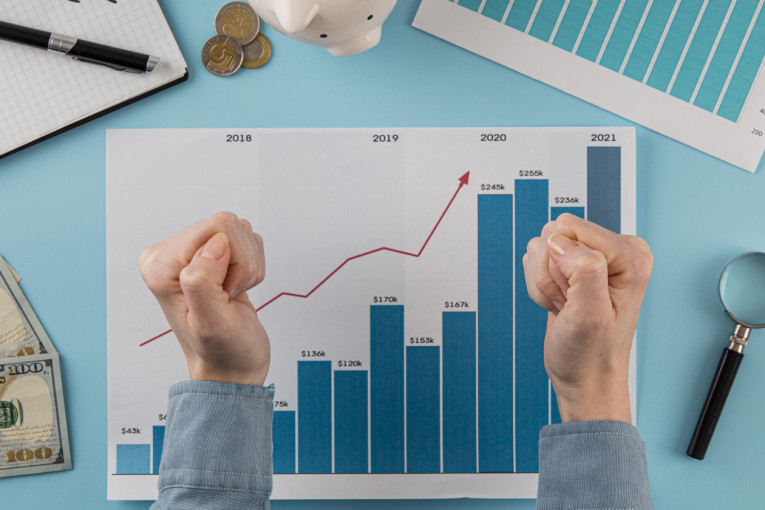
President Prabowo Subianto has set a target of zero poverty or a poverty rate of 0% by 2045 and an economic growth rate of 8% in the next five years.
This target is a key reference in national economic policy, requiring a well-prepared, measured, and inclusive strategy.
Indonesia’s current economic condition, with second-quarter economic growth of 5.05% in 2024 and inflation controlled at 2.12% year-on-year, keeps the possibility of achieving this target alive, although several challenges lie ahead.
Considering Indonesia’s trade balance, which has been in surplus for more than four years, UGM’s Professor of Agricultural Economics and Agribusiness, Masyhuri, stressed the importance of exploring new sectors to support Indonesia’s export diversification while enhancing the competitiveness of national products in the global market.
This will be related to increasing investments and how economic policies can facilitate greater investment flows.
“One of the sectors that can be boosted is agriculture, although data from the Ministry of Agriculture shows that the trade balance for this sector had consistently been in deficit from 2019 to 2023,” said Professor Masyhuri in an online interview on Thursday (Oct. 24).
Professor Masyhuri, recently invited by the Presidential Special Staff for Economic Affairs to participate in a Focus Group Discussion (FGD) on strategies to achieve Indonesia’s economic growth targets, dissected several policies that the government could implement to meet these goals optimistically.
He explained that agricultural development contributes to regional development, both directly and indirectly, by supporting economic growth through its contribution to the Gross Domestic Product (GDP).
Empirical research has shown that productivity growth in the agricultural sector can reduce poverty.
“We need to reconstruct the strategy to tackle poverty, not just by providing social assistance,” said Professor Masyhuri.
Since the agricultural sector employs the largest workforce, developing an integrated agribusiness system is necessary.
Additionally, the education and skills training system can be reformed to prepare a workforce relevant to the demands of future industries.
Vocational, professional, and certified training should also be provided in the agricultural sector without neglecting conventional education.
“Incorporating IoT (Internet of Things) into agricultural school curriculums can attract more young people to get involved in this sector,” he added.
Furthermore, Professor Masyhuri emphasized the importance of raising the prices of agricultural products, particularly for exportable commodities, as price increases would impact farmers’ income.
One approach is to develop superior commodities, as each region or village has distinct characteristics and commodities.
These commodities can then be enhanced with added value and developed sustainably through Micro, Small, and Medium Enterprises (MSMEs).
“Thus, there is a synergy between agriculture and industry. We can promote MSMEs with Keynesian stimulus, for instance, through registration, tax exemptions, credit facilities with low-interest rates, and other incentives,” Professor Masyhuri stated.
He noted that the 8% economic growth target is still attainable, although Indonesia’s average economic growth from 1961 to 2023 was only 5.11%.
According to him, Keynesian stimulus is the most potential tool for achieving high economic growth.
“This stimulus refers to government fiscal policies to maintain purchasing power and stimulate demand,” Professor Masyhuri explained.
He provided examples like tax holidays for MSMEs, new companies, start-ups, and small companies, which would boost economic growth as they create jobs, reduce unemployment, and lower poverty rates.
Moreover, efforts to increase production must be accompanied by comprehensive agricultural modernization through downstreaming and technology. This should extend beyond product production to processing and manufacturing, marketing and distribution, and the provision of supporting systems such as warehousing, insurance, and agricultural banks.
“For example, sago can be utilized not only as a raw material for the food or beverage industry but also for other industries. So its derivatives could reach the 6th and 7th levels,” explained Professor Masyhuri, who also serves as an Advisor to the Indonesian Agribusiness Association (AAI).
Professor Masyhuri also stressed that the downstream of agricultural commodities would only be effective if supported by solid trade negotiations.
This is because other countries could potentially develop similar agricultural commodities, weakening domestic product competitiveness.
“The government’s role in establishing 0% tariff-free trade agreements with potential export destination countries is crucial,” he concluded.
Author: Triya Andriyani
Photo: Freepik
Post-editor: Afif

